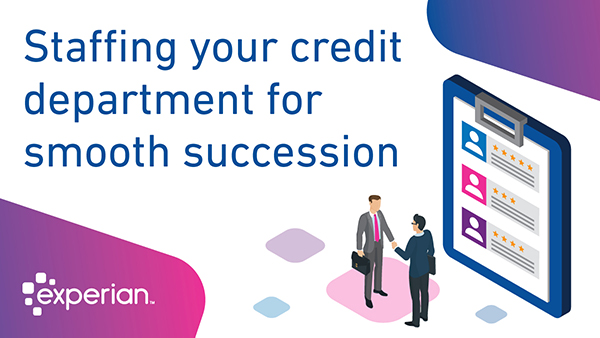
The credit industry works very differently than it did even a few years ago. In recent years, new technology and the availability of analytics means that credit departments have much more information to make decisions. When both commercial and consumer data is used together, departments unlock a lot of powerful data that can be combined for more accurate decisions. However, some credit departments have not changed their processes and staffing structure. By using the traditional approaches even with new technology and data, credit departments are not able to see all of the possible benefits. I recently spoke on a panel of credit management executives at the High Radius Conference.
During the talk, we touched on this topic and talked afterwards about what credit organizations need to do. Jan Minniti, Senior National Account Executive with the National Association of Credit Management mentioned that while many large organizations are using automation, even smaller shops can benefit as well. But her larger point was in order to transform, organizations must change the skill sets that they are recruiting, and expand training offered to current employees.
Here are a few keys to help your organization transition to modern credit management:
1. Understand the recent evolution of credit models and technology
As Minniti pointed out, we started out with general payment score models that were applied to everyone. However, today more specific models are available (for example, specific to an industry), so you can choose the best model depending on who you are selling to.
These new models move us into a new generation where instead of making gut feel decisions or spreadsheets to track data, we can use statistics to not only assess risk, but also assign credit line increases. These scores and credit lines can then be fed to automated tools to manage the order-to-cash process. Even more importantly, we can use automated technology for account management strategies, which increase efficiency, maximize account potential and reduce fraud. In our experience at Experian, we have evidence that machine learning reduces manual reviews by as much as 74 percent.
2. Learn how credit managers can revise their role and processes
Research recent changes in the financial services industry for inspiration on what is possible and how to help your department get to the next generation. Typically the FinTechs and large banks are on the leading edge of advances in risk management. By starting with analytics, the financial industry has driven a lot of innovation and change. They have also focused on data management to evolve to a frictionless environment. Think of how your company can incorporate these changes. But most importantly, how you as a credit manager can introduce and drive the change.
3. Revise the credit manager role to include more strategy
Instead of shrinking from the change out of concern that technology will replace your role, credit managers need to lead the change. Start by learning what’s possible with regards to both technology and data. Share it with other credit managers and leadership to help your company be an early adopter. But, be careful not to fall into “shiny object syndrome”, where you use technology just because its available, even though it might not yet have the features you need. A solution in search of a problem is always a questionable approach.
Minniti says that she knows changing the roles is challenging because it is a big shift and credit is not typically the shiny, new area of the company. However, to reduce risks and impact change, credit managers must seek greater visibility with the C-Suite.
“Credit managers should educate management by using reports to show the importance to your company. Use data to show how much money you are saving the company,” says Minniti. “It’s also important to talk about automation, which actually helps credit managers stay relevant instead of replacing their jobs.” Having an automated credit strategy is also a great way to manage in times of turnover, or in trying to up level expertise.
4. Revising staffing and hiring guidelines
Minniti says it starts by picking good analysts who can replace you. “If you staff with people who listen to what the machine learning is saying, but don’t have the ability to think beyond that then who fills your shoes when you move on? What happens to the credit department?,” says Minniti. “We will always need people to tell the machine what to do, be able to adjust the model when the economy changes.”
One of the biggest reasons that many managers and departments are resisting technology is fear of being replaced. This simply isn’t going to happen. Without the experience and background, credit models quickly decay. It is impossible to turn over all of the thinking behind credit decisions to machines. Someone needs to be there to manage the ongoing performance of the models, and make sure the analytics track with changes in the marketplace.
Credit departments that take initiative to lead the change, to use the new technology and models, will demonstrate their value to their organization. By using automation and machine learning, the credit department becomes more valuable to the organization instead of less. By proactively managing the change and taking the lead, you can set your department on the right path to lead the transformation of your company as well as the credit industry.

